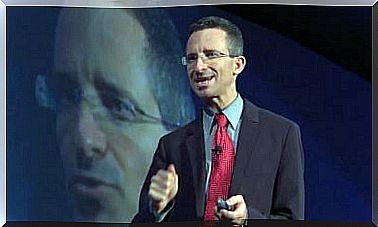The Fascinating Theory Of Rumor

The rumor theory was proposed by Allport and Postman, two researchers who studied the subject in depth. They discovered, first of all, that most of our everyday conversations are riddled with rumors. Of supposed truths, not proven, that circulate without control.
The definition of rumor includes any statement or proposition that has a specific, unverified content. This means that there is no evidence to support its veracity. Even so, they circulate by word of mouth, or on social media, from screen to screen.
The rumor theory says that not all unsupported information becomes hearsay as such. For this to happen, a set of characteristics must be met. Only some content has that potential to spread and become “true” without it being.
The rumor must be about something relevant
The rumor theory states that for information to become rumor, it must be about something that people consider important. What is relevant or not depends on the values that are present in a given community.
The rumor is not necessarily about known or famous people. For example, sometimes the case of a co-worker who is apparently being abused by her partner or a co-worker who was seen holding the hand of another boy in the wee hours of the morning becomes relevant. And your case can go viral, with no more proof than suspicions without much argument.
According to the rumor theory, this information is validated and disseminated because it is important in a community. In the first case, it also connects with values that are currently considered very relevant, such as the fight against gender violence. In the second case, it would clash with the more traditional values that still survive, especially in older people.

Ambiguity and the rumor theory
The second characteristic that information must have to become a rumor is that it be restricted. Not many details are presented about it and, of course, more evidence. Ultimately, there are not enough elements to reach a reliable conclusion.
What is presented to others are a few items that stimulate the imagination. All receivers know that “there is something hidden” and this is precisely one of the elements that most attracts their attention. It is about elucidating a mystery, completing what is needed.
Ultimately, the rumor theory talks about information that invites you to participate. Ambiguity allows virtually anyone to construct their own version of events. That is precisely the rumor: an imaginary construction that acquires overtones of truth, without support.

The operation of rumors
The rumor theory also states that rumors are formed to explain what generates intrigue or to ratify prejudices based on fear. In the first case, it is based on the fact that there is not enough information on a given matter. Or that the sources of information that exist are not reliable. Some data are known, but it is intuited that there is something behind them. Rumors, then, fulfill the function of filling that information gap.
Likewise, rumors, especially those with a slanderous tinge, contribute to sustaining prejudices, mainly hateful ones. The usual thing is that this hatred is also a way of disguising fears. In the absence of evidence to justify the rejection, rumor is used to meet those times.
Rumors are not static. The information, generally false, that they contain, mutates and is modified. They tend to warp, always with the purpose of making them more credible or spectacular.

The fate of rumors
The human being has a special weakness for fantastic explanations. Without realizing it, we tend to prefer spectacular situations, which ignite our imagination, instead of those cold rational truths that limit fantasies.
Most rumors tend to fade, as the guesswork starts to get repetitive or the matter loses importance. The fantasies associated with that rumor become routine and the information loses its extraordinary character. They also die when the real and forceful explanations appear that kill the false information.
However, this is not always the case. There are rumors that remain over time. This occurs when the base of everything contains real information that for some reason is never sufficiently known. This is what has happened, for example, with the death of Hitler and the ambiguities that surround him. These rumors give rise to theories, and even ideological currents. This is how human beings are: curious, imaginative and given to over-believing.









